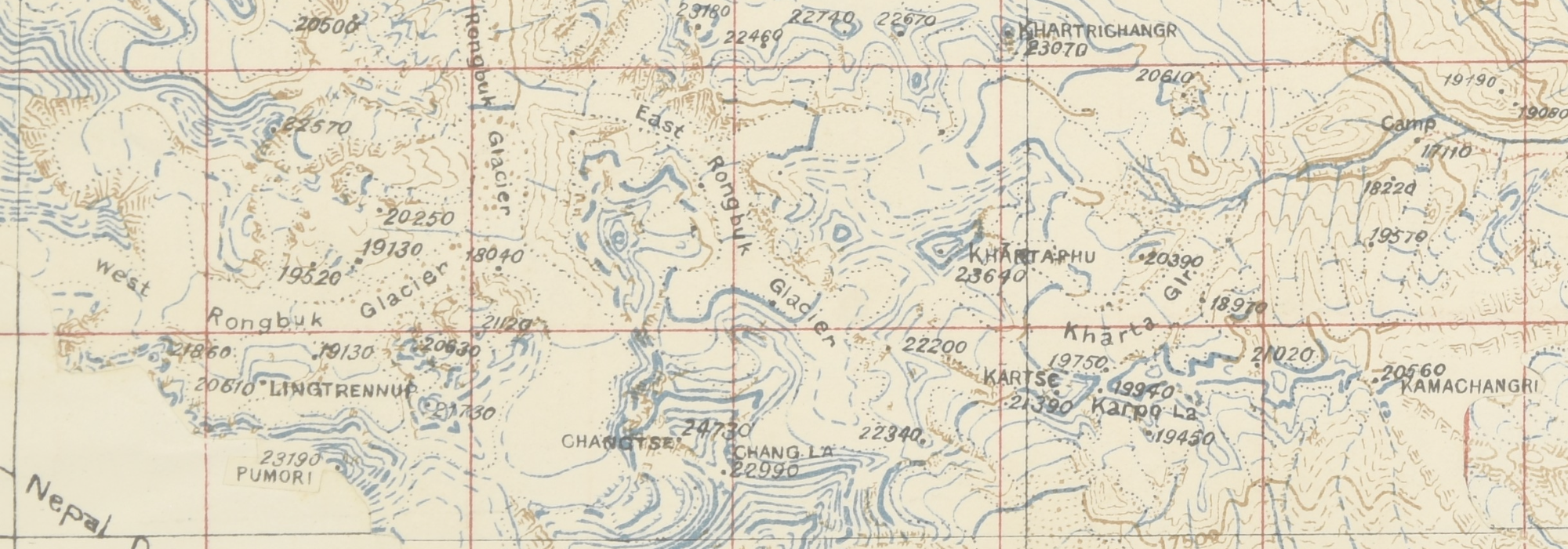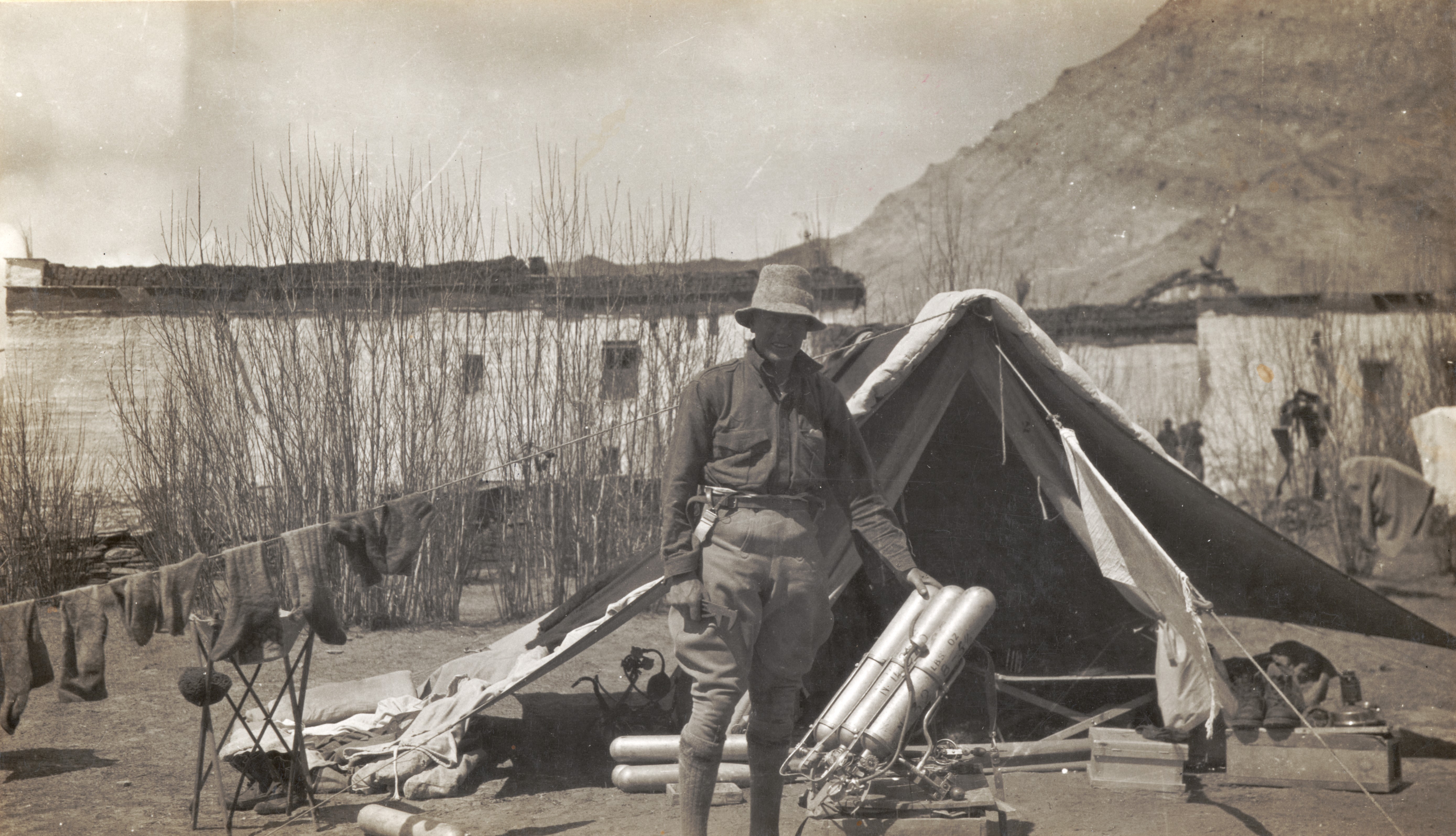
Sandy's last day in Base Camp
2nd May 1924

Photo by N. E. Odell, Courtesy of the Royal Geographical Society (with IBG). Image taken earlier in the expedition (April 1924).
2nd May was Sandy’s last day in Base Camp and he spent it working flat out on the apparatus. In his lengthy diary entry for that day he goes into great detail about the repairs, alterations, modifications he made, but I sense a great feeling of relief that, in the end, he had been able to make it work to his satisfaction. As an encore that afternoon he repaired a roarer cooker which had been brought to his workshop tent two days earlier and shortened Mallory’s crampons by half an inch: ‘in so doing I spiked one hand and burnt the other in 2 places so was glad Nima didn’t understand my French accent! I reduced the tool box as much as I dared to send up to Camp III’. He was ready on time, scheduled to leave the following day with Mallory, Odell and Hazard to climb past Camps I and II to III: ‘I hope to put up a good show when the altitude gets a bit trying. I should acclimatize well at III the time we will spend there'.
From the outset the two climbing teams, Norton and Somervell, and Mallory and Sandy, were scheduled to make their acclimatization trips prior to the summit assault together. Sandy and Mallory were to be the first team to set off and occupy the higher camps where they would be overtaken on 15 May by Norton and Somervell who would be setting up two camps (V and VII) on 15 and 16 May. The other two would be resting on the 15 at Camp IV and pushing to an intermediate camp, No. VI, on the 16, so that both would be making the summit attempt on the 17, but from different camps. This would give them three camps to retreat to on the way down if necessary and provide oxygen support if the non-oxygen party, Norton and Somervell, got into difficulties.
The various camps were to be set up by the Gurkha NCOs in order to conserve, as far as possible, the energy of the climbers by keeping them at Base Camp and not requiring them to haul loads at this stage. The actual portering to Camps I and II was done by 150 Tibetans (men, women, and boys) whom Bruce had recruited in Shekar Dzong with permission from the Dzong Pen. The condition of their employment was that they would be given some rations and paid four tankas a day (about 1 shilling) and that they would not be employed on snow or ice. The Dzong Pen had asked that they be quickly released after their work was done as they were needed to sow crops and attend to their fields on their return. The Tibetans undertook to look after themselves in all other respects, which meant that they had to sleep out in the open at 18,000 feet with neither tents nor blankets.